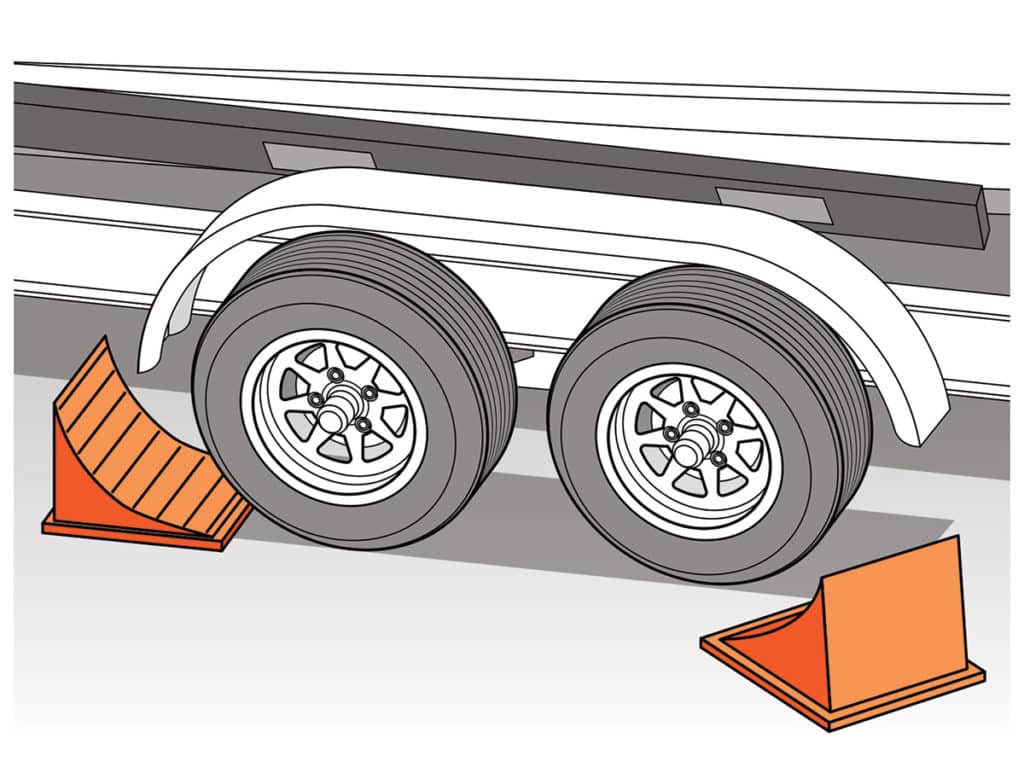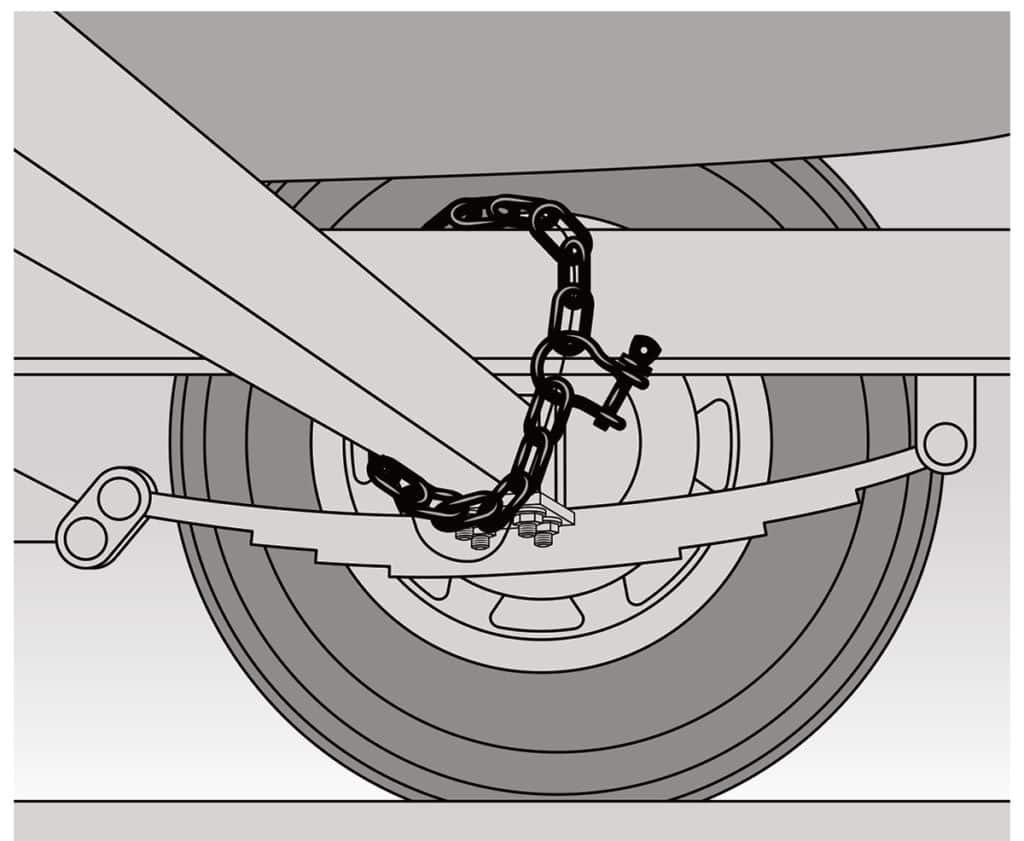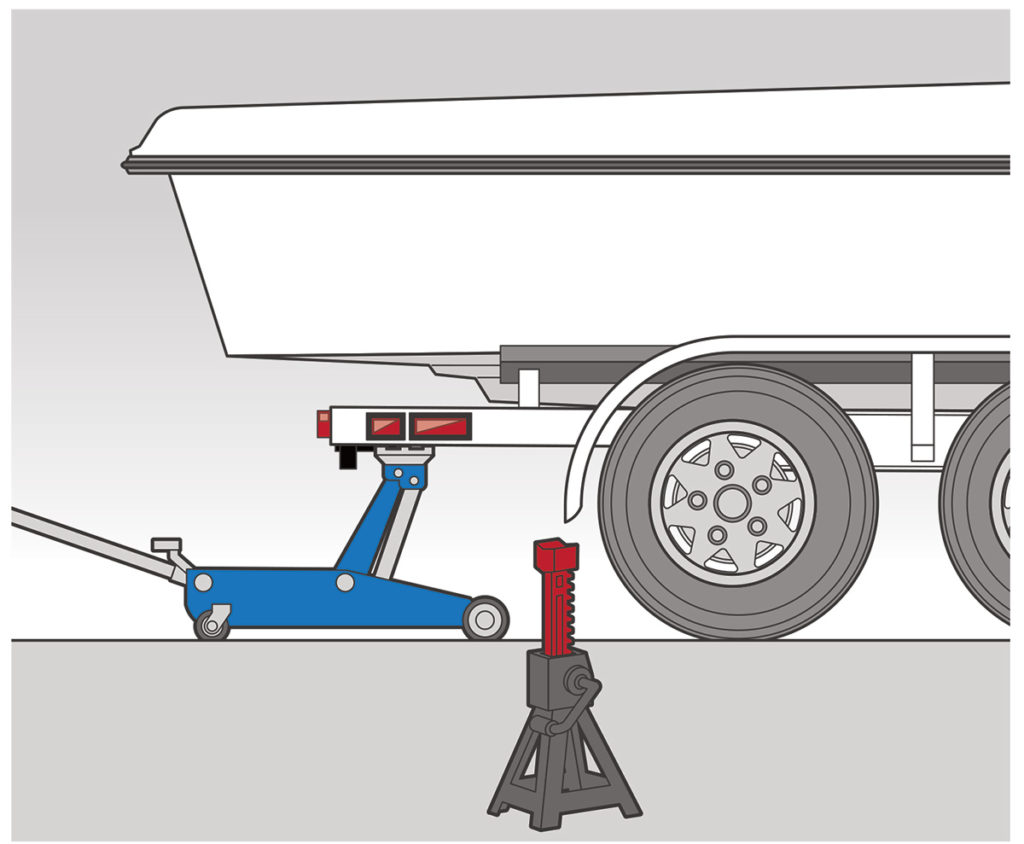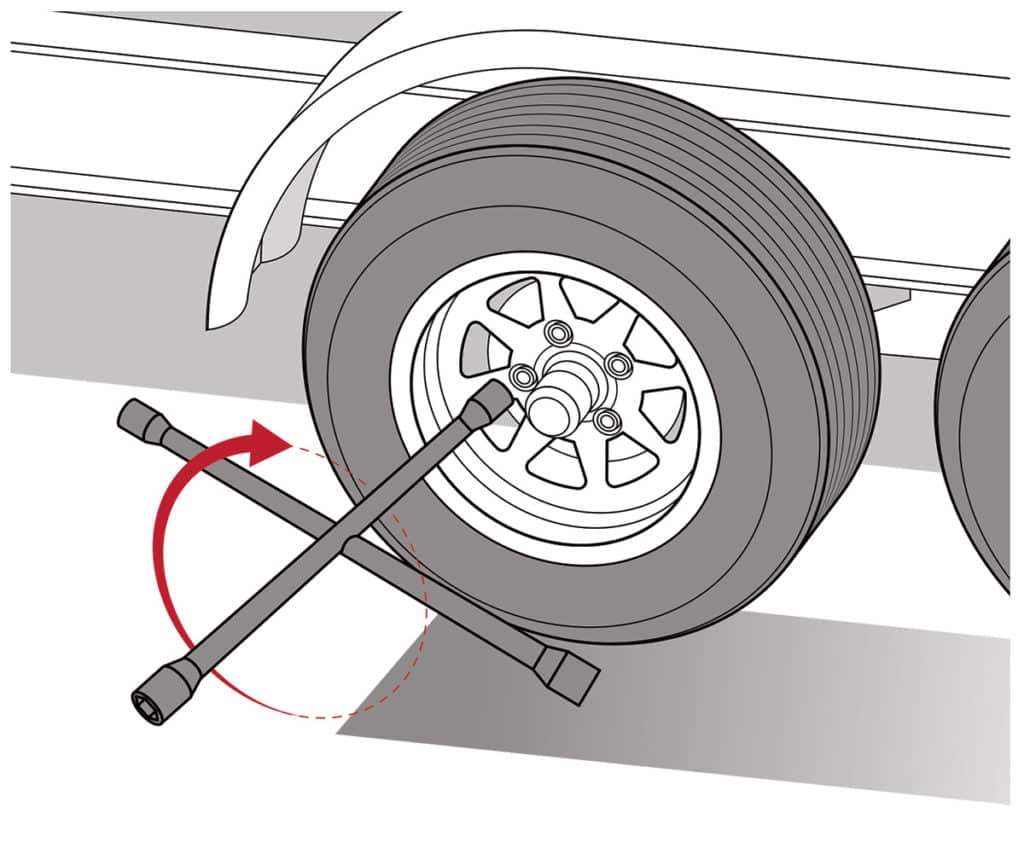If you plan to keep your boat on a trailer for winter or other long-term storage period, it’s a good idea to block up the trailer. This takes the strain off the suspension system and deters tire rot and flat-spotting, saving you money and extending the longevity of your trailer and its components, whether you store your boat trailer on a paved surface or not.
This also thwarts would-be thieves, who’d have a hard time stealing your boat and trailer without wheels. At the same time, it gives you a good opportunity to thoroughly inspect and, if necessary, replace or rebuild components such as the brakes, wheel bearings, hydraulic surge actuator, trailer lights, suspension system and more.
Blocking the trailer is a relatively simple process, provided you have the right tools and equipment. Here’s how to get it done, using a tandem axle holding a 25-foot deck boat as an example.
Getting Started
Skill Level: 2/5
Time to Complete: 3 Hours
*3-ton floor jack ($97.99, harborfreight.com)
*Four 2¼-ton adjustable height jack stands ($14.99/pair, sears.com)
*20-inch star lug-nut wrench ($18.99, autozone.com)
*2-by-14 solid lumber for support under jack stands
*Four wheel chocks ($10.99 each, westmarine.com)
*Chain and shackles
Quick Tip: When you put the wheels back on and lower the trailer frame next season, the chains supporting the axles will also automatically loosen up again, making them easy to remove.

1. Pick the Location
Select a spot that’s level (fore to aft and side to side) and does not block any areas you might need to access. Avoid overhangs that might dump snow, water or ice on the boat cover. The trailer will be supported at five points with four jack stands and the tongue jack. Make sure the ground under each point is firm enough to support each jack. Give yourself enough room to work on both sides. Chock the wheels, disconnect the tow vehicle, and level the trailer with the tongue jack.

2. Support the Axles
If your trailer has a leaf-spring suspension system, chain each axle to the trailer frame with the same amount of slack at each end. Use shackles to secure the chains. Be careful not to run the chain directly across any brake lines or trailer wires, which might be pinched or cut by the chain when it grows taut. This support will prevent the trailer axles from sagging excessively when you jack up the trailer frame. This step is not needed if your trailer has torsion-axle suspension. Slightly loosen the lug nuts.

3. Raise the Trailer
Start about 4 feet aft of the rear axle. Use a sufficiently rated floor jack to lift the frame until the rear tires are an inch or two off the ground. You may need to use blocks with the jack to get sufficient height. Place a jack stand under the frame with a 2-inch-thick piece of solid wood underneath for support and lower the floor jack. Then move the floor jack to a spot about 4 feet ahead of the front axle and do the same thing. Repeat the process on the opposite side. Readjust the trailer level with the tongue jack.

4. Store the Wheels
Use a star wrench to spin off the lug nuts, then remove the wheels/tires. Before you roll them into your garage or shed for winter storage, inspect the tires for cracks or damage to the sidewalls (both sides), treads and valve stems. Check the wheels for bent rims or excessive corrosion, especially around the center, spokes and outer rim. Plan on replacing worn or damaged wheels and tires before next season. Don’t forget to do the same with your trailer’s spare tire. Check the air pressure before reinstalling next spring.
Off-Season Maintenance
With the trailer wheels removed and the frame on jack stands, now is a good time to inspect the trailer for needed maintenance and repairs. Here are some of the critical items
to check.
Corrosion
Use a wire brush to remove spots of rust, then thoroughly clean with denatured alcohol and apply two coats of corrosion-inhibiting primer. Finish off with a coat of paint that matches your trailer.
Lights
Check and replace any wires or connections that look frayed or corroded. If there are multiple repairs, it might be easier to run an entirely new wiring harness. Now is also a good time to replace any burned-out lights.
Bearings
Pull off the wheel hubs and inspect the bearings and seals. If in doubt, replace them. Repack with fresh grease.
Brakes
Check the brake pads and replace them if they have less than 1/8-inch of useful life left. Have drum brakes turned. If disc brakes are scored, have them turned as well.
Coupler/Surge Actuator
Make sure the coupler is in good condition and that the surge-brake actuator operates properly and is free of leaks. Check the brake lines for leaks too, and replace any that show excessive corrosion or look faulty. Top off the system with brake fluid.
Bow Winch
Check the winch to make sure it is operating properly and that the winch strap or cable and bow hook are in good condition.









